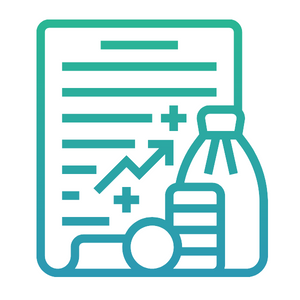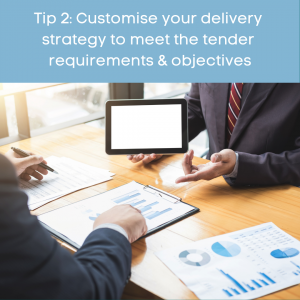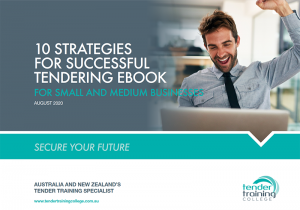By Kate Burrows, Managing Director, Tender Training College
My tender writing students often ask: “Can you show me an example of a good tender response, Kate?”
The truth? There isn’t a universal ‘good’ tender response.
Each tender is unique – based on the client’s specific tender requirements and objectives for that particular contract. And we must use these elements to shape our response, as well as our own company’s unique performance, experience, capability, capacity and approach.
However, I can provide a structured framework that helps to understand what to write in an answer, and how to write a response. This article focuses on the core elements of ‘what to write’.
What to write
Tender questions are broken into two main categories:
1. Past performance and experience – does your organisation have the track record in successfully delivering similar contracts?
2. Proposed approach: how does your company plan to meet the specific requirements of this Contract?
Why do clients ask for evidence of past performance and experience? Past performance is an indicator of future performance and, if it is good, it provides a level of certainty to the client your business can do the same for them. Past performance will also reflect the success of your company’s approach.
And why do clients ask about your proposed approach? They do so to understand that your company has a systematic, consistent and proven way to deliver the contract requirements and provide value over the term.
Often, you’re asked about your company’s proposed approach in several sections of the tender: methodology, safety, quality, environment, sustainability and social procurement.
Frequently, these are open-ended questions where a structured framework can help you cover the key points the client is expecting to read.
Taking a Structured Approach: What to Write
When faced with a tender question about your approach, consider presenting the following content in the hierarchy that is shown in Figure 1.
Remember, the overarching goal is to answer the question, and show how your approach meets the tender requirements and achieves the client’s objectives. Also, don’t forgot to tell the client that your company has an approach and it has been successful in meeting similar contracts in the past (if correct).

Figure 1: Content hierarchy for responding to an ‘approach’ question
Let’s have a quick look of the above in practice if we were answering a safety question*. If the question is: “Outline your company’s safety approach to deliver the Contract requirements,” your response could include the following:
1. Vision and commitment: Showcase your organisation’s safety vision and commitment. For example, “Our company prioritises the health, safety and wellbeing of our people – we put this at the heart of everything we do”. Show an understanding of the client’s safety vision and alignment with your company’s if possible.
2. Strategy, policy and targets: A safety strategy will provide the direction for how the company will achieve the above vision and commitments. A Safety Policy is an overarching guideline regarding all safety related principles, measures and values. Specific targets, e.g. reducing lost time injuries, also form part of the strategy. Show how these elements will be applied to deliver safe outcomes for contract delivery.
3. The people managing, delivering and improving the approach: This is the section you talk about who is responsible for WHS and your organisation’s safety culture. Leadership plays a vital role in shaping an organisation’s safety culture, and the client will want to know the key people with the responsibilities to deliver the contract safety.
4. The systems and techniques to be applied
Established systems and processes show that your organisation will apply a consistent and reliabile approach to deliver the WHS contract requirements. For instance, a Work Health and Safety Management System is an industry standard approach to managing safety and risk. It will have the policies and procedures that are implemented throughout the organisation, but specifically you want to discuss those which will be applied to safely deliver the project. There is also the opportunity to discuss the safety initiatives or special programs your company has to support its safety strategy and reduce risk.
There is not a single ‘magic’ formula for every tender question on approach. However, the above hierarchy will help you build a compelling narrative that addresses the client’s goals and paints a clear picture of how your organisation can deliver exceptional outcomes.**
Notes:
*I am not a safety expert. Please seek specific guidance from your organisation’s safety representative on what is relevant for your business.
**I am a tender writing expert, so if you would like to join me for a Tender Writing Masterclass – our dates for early 2025 have just been released. View dates here.




 Many of my tendering clients, particularly small to medium-sized enterprises (SMEs), are struggling with how to meet social procurement targets and respond effectively to these questions in tenders.
Many of my tendering clients, particularly small to medium-sized enterprises (SMEs), are struggling with how to meet social procurement targets and respond effectively to these questions in tenders.




 anagement plans are by nature formal documents. They often form part of an organisation’s quality or overarching management system, and therefore are generally similar in appearance.
anagement plans are by nature formal documents. They often form part of an organisation’s quality or overarching management system, and therefore are generally similar in appearance.



















